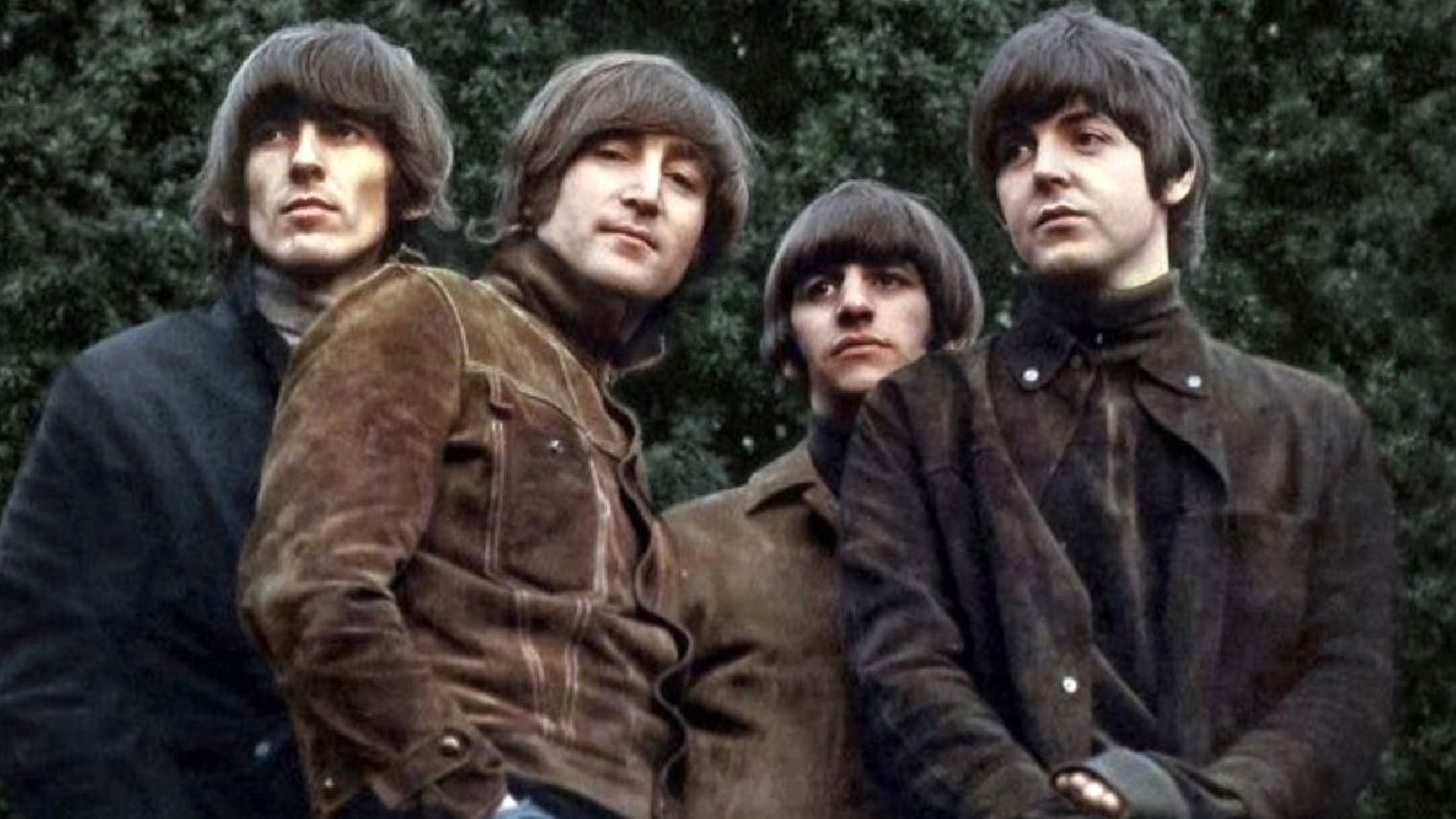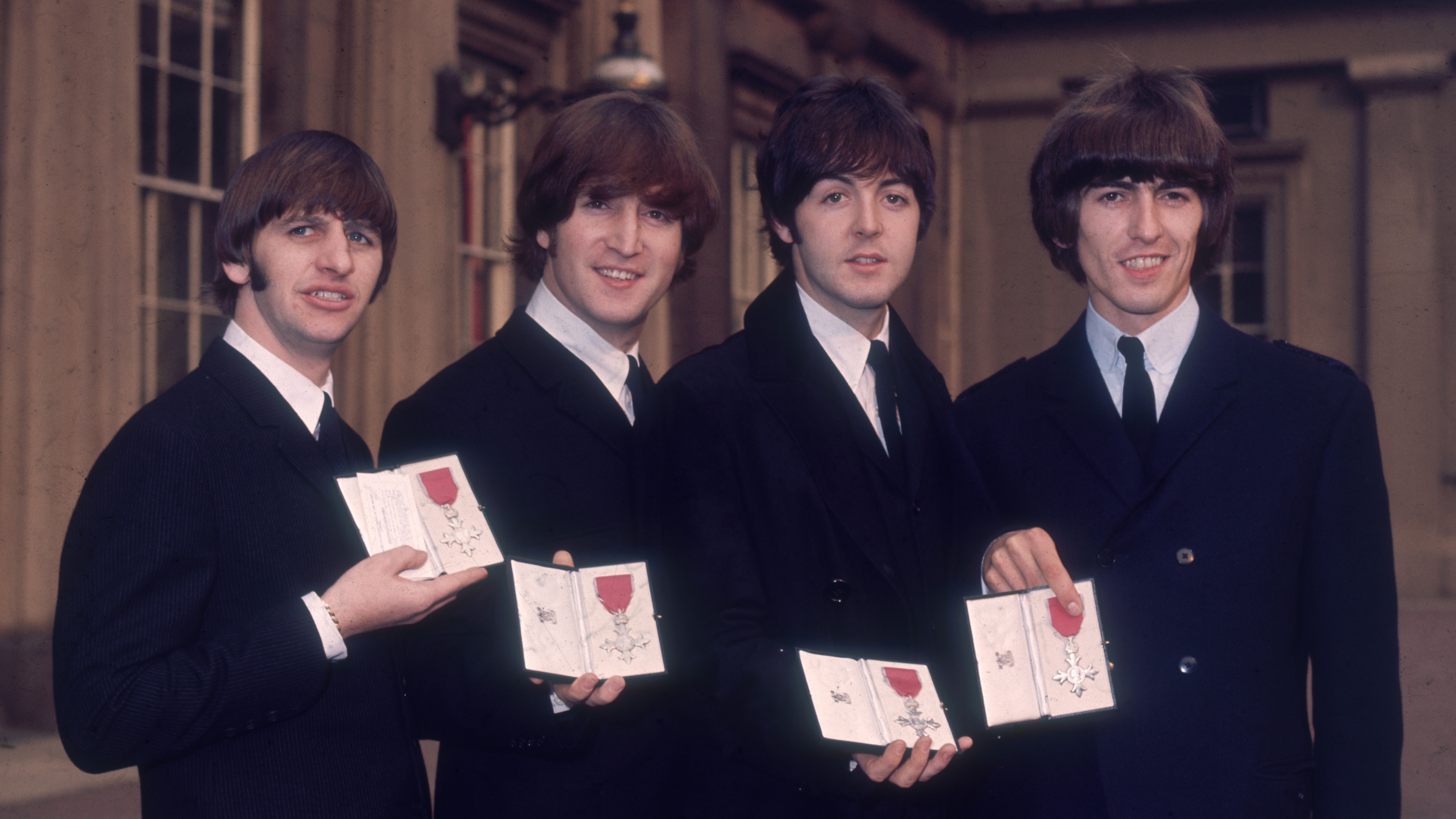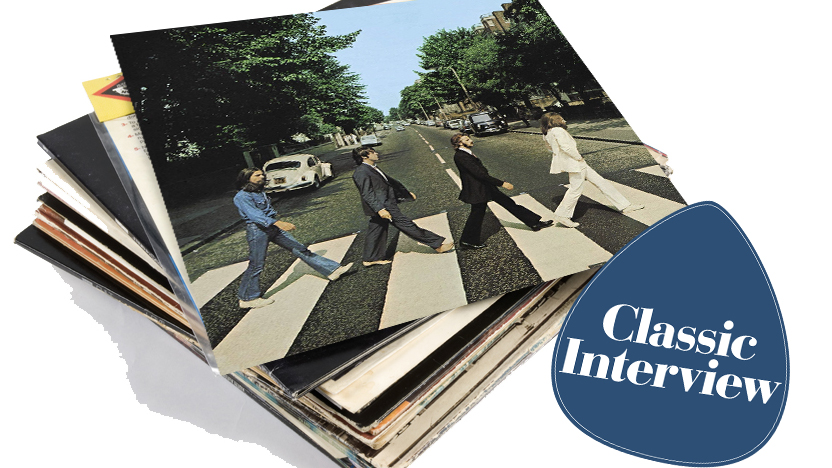"Songwriting for me, at the time of Rubber Soul, was a bit frightening because John and Paul had been writing since they were three years old": How The Beatles raised their game in 1965 to create a masterpiece that "broke everything open"
The Beatles' sixth album Rubber Soul was a colossal creative leap and marked the point at which albums began to be viewed as works of real artistic merit

On 12 October, 1965, the four members of The Beatles arrived at EMI Recording Studios in Abbey Road, London to begin work on their sixth album, which would become Rubber Soul. This was the first time that they had been able to record an album free of concert, radio or film commitments and they seized the opportunity. Over the next four weeks, Studio Two, they pushed sonic boundaries and unveiled a set of songs that was unlike anything they had written or recorded before.
The album that emerged would signal a gigantic shift from their previous release Help! and would have a huge impact on their peers. Almost six decades on from its release, Rubber Soul remains one of the most influential albums of all time.
For The Beatles, the sounds and social upheavals of America had a galvanising impact. In August 1965 they had undertaken a 16-date tour of the US, where they were exposed to the rousing soul of Motown and Stax as well as the raw, politicised folk-rock of Bob Dylan and The Byrds. By the time they returned to Abbey Road their musical horizons had been significantly broadened.
Dylan was influencing us quite heavily at that point
Paul McCartney
On this album the band blended folk, rock and soul, and explored mature themes, with socially conscious lyrics.
“Things were changing,” said Paul McCartney in The Beatles Anthology documentary series in 1995. “The direction was moving away from the poppy stuff like Thank You Girl, From Me To You and She Love You… we’d come to a point where we thought, ‘We’ve done that. Now we can branch out into songs that are more surreal, a little more entertaining’. And other people were starting to arrive on the scene who were influential. Dylan was influencing us quite heavily at that point.”

Rubber Soul was also their first album that was influenced by marijuana. “Grass was really influential in a lot of our changes, especially with the writers,” reflected Ringo in the 1995 Anthology documentary. “We were expanding in all areas of our lives, opening up to a lot of different attitudes.”
The band already had one track ready, Wait, a leftover from the Help! Sessions. But the song that really kickstarted the album was Drive My Car, a direct homage to the Stax sound the band loved. The song’s bass-heavy R&B Stax feel had much to do with George Harrison, who was infatuated with Otis Redding’s 1965 hit Respect.
Want all the hottest music and gear news, reviews, deals, features and more, direct to your inbox? Sign up here.
The song was conceived by McCartney who arrived at Lennon’s Weybridge home for a writing session, with the tune in his head. "The lyrics I brought in were something to do with golden rings, which are always fatal [to songwriting],” recalled McCartney in a 1994 interview, quoted in Far Out magazine.
“I came in and I said, 'These aren't good lyrics but it's a good tune’. Well, we tried, and John couldn't think of anything, and we tried, and eventually it was, 'Oh let's leave it, let's get off this one’. So we had a break... then we came back to it, and somehow it became 'drive-my-car' instead of 'gol-den-rings,' and then it was wonderful, because this nice tongue-in-cheek idea came."
The lyrics, rich in sexual innuendo, focus on an aspiring actress who hires a ‘chauffeur’. Drive My Car was recorded on 13 October 1965 in a session that ran well after midnight. This was the album on which McCartney first used a Rickenbacker 4001S bass, with a fuller, punchier tone that would become a defining feature of the sound on Rubber Soul. McCartney opted for a Vox AC100 amp and a Fender Bassman. Lennon and Harrison, meanwhile, played through Vox AC30 and AC100 amps.
This was also the album on which Stratocasters were used for the first time. “I decided I'd get a Strat, and John decided he'd get one too," Harrison is quoted as saying in Andy Babiuk’s 2016 illustrated book, Beatles Gear. “So we sent out our roadie, Mal Evans… and he came back with two of them, pale blue ones. Straight away we used them on the album we were making at the time, Rubber Soul.”
George's would give his '62 Strat a Day-Glo makeover in 1967 ahead of the Magical Mystery Tour album – it would be nicknamed Rocky and he'd continue to use it for slide well into his solo album years.
On Drive My Car, Harrison plays a Stax-style bass line on his new Strat and McCartney doubles up on the Rickenbacker bass. This was also the song on which McCartney played his first guitar solo on a Beatles track, a slide solo, with his 1962 Epiphone Casino.
Nowhere Man came, words and music, the whole damn thing as I lay down
John Lennon
Harrison and Lennon’s new Sonic Blue Strats can be heard across the album but they really shine through on Nowhere Man, particularly on Harrison’s solo. But the genesis of the song was the result of a frustrating few hours in the studio for John Lennon.
“I'd spent five hours that morning trying to write a song that was meaningful and good, and I finally gave up and lay down,” Lennon told Playboy magazine in 1980. “Then Nowhere Man came, words and music, the whole damn thing as I lay down.”
Another new instrument that featured on the album, on tracks such as If I Needed Someone, was Harrison’s new Rickenbacker 360/12, which he had acquired when the band played a show in Minneapolis on 21 August 1965.
The Rickenbacker was presented to him by a local guitar store at a press conference that day and he played it on stage that evening. “That’s fab,” Lennon reportedly said as Harrison was presented with the guitar, “Where’s mine?”
Rubber Soul was the album on which the band started to strive for more expressive sounds and arrangements. On Girl, high equalisation was applied to Lennon’s voice to capture the hissing sound as he drew breath. Lennon put a capo on the eighth fret of his Gibson J-160E, which made it sound like a bouzouki, enhancing the Meditarrenian flavour of the song – McCartney had written part of the music that was used in the outro while on holiday in Greece in September 1963.
In the song Girl that John wrote, there’s a Zorba-like thing at the end that I wrote which came from that holiday," McCartney told Barry Miles in the book Many Years From Now. "I was very impressed with another culture’s approach because it was slightly different from what we did. We just did it on acoustic guitars instead of bouzoukis."
The Word, with its concept of universal love, features a stunningly fluid bass groove and rhythmic piano from McCartney, the latter being heavily manipulated using compression and equalisation.
On Harrison’s Think For Yourself, McCartney recorded two bass tracks, one through a distortion unit, which is credited as 'fuzz bass' on the sleeve credits. EMI built their own distortion boxes, although it’s possible McCartney used a prototype Vox Tone Blender.
A real high point on the album is Lennon’s Norwegian Wood, initially recorded with the working title of This Bird Has Flown. It was the first track by a rock/pop band to feature sitar, played on a cheap instrument bought by George Harrison from an Indian gift shop in London’s Oxford Street. It was the start of Harrison’s interest in Indian culture.
I had to come from nowhere and start writing, and have something with at least enough quality to put on the record alongside all the wondrous hits. It was very hard
George Harrison
It’s to George Harrison’s eternal credit that he refused to be daunted by the songwriting prowess of Lennon and McCartney. On Rubber Soul, he contributes two songs, If I Needed Someone, one of his best compositions, and Think For Yourself.
“Songwriting for me, at the time of Rubber Soul, was a bit frightening because John and Paul had been writing since they were three years old,” recalled Harrison in the Beatles Anthology book, published in 2000. “It was hard to come in suddenly and write songs. They’d had a lot of practice… I had to come from nowhere and start writing, and have something with at least enough quality to put on the record alongside all the wondrous hits. It was very hard.”
As the recording progressed, the influence of the soul music of Stax and Motown and the electric folk of Dylan really came to the fore. Harrison’s Think For Yourself was inspired by Dylan’s Positively Fourth Street, while You Won’t See Me has a distinct Motown feel. McCartney’s Michelle meanwhile, is evocative of wistful French pop.
Then of course there is In My Life, a beautifully sparse and evocative song in which Lennon looks back on the Liverpool of his youth. In Mark Hertsgaard’s 1996 book A Day In The Life: The Music And Artistry Of The Beatles, Lennon is quoted as saying the song is his “first real major piece of work”.
We were thinking about the albums as an entity of its own and Rubber Soul was the first one to emerge in this way
George Martin
As Rubber Soul took shape, it became clear that this was a record that was being conceived as a single cohesive work. “I think Rubber Soul was the first of the albums that presented a new Beatles to the world,” explained George Martin in Kenneth Womack’s 2017 book Maximum Volume: The Life Of Beatles Producer George Martin (The Early Years, 1926-1966). "We were thinking about the albums as an entity of its own and Rubber Soul was the first one to emerge in this way."
George Harrison is quoted in Far Out magazine as saying in 1990 that Rubber Soul was his favourite Beatles’ album. "We certainly knew we were making a good album. We did spend more time on it and tried new things. But the most important thing about it was that we were suddenly hearing sounds that we weren't able to hear before."
Rubber Soul was released on 3 December 1965 to universal acclaim and promptly went to No. 1 on both sides of the Atlantic. The album blazed the trail for the emergence of albums as creative works in their own right and prompted a major shift away from singles. For The Beatles’s peers, it was a real lightbulb moment.

Rubber Soul blew my mind
Brian Wilson
“Rubber Soul blew my mind,” recalled Brian Wilson in an interview with Paste magazine in 2004. “I liked the way it all went together, the way it was all one thing. It was a challenge to me to do something similar. That made me want to make Pet Sounds, I didn’t want to do the same kind of music, but on the same level… It wasn’t pop music; it was something more advanced.”
The album had a galvanising impact on the band’s peers such as the Stones and heralded in an era when for the first time, rock music was culturally legitimised and regarded as having real artistic merit. The album “broke everything open,” recalled Steve Winwood in John Kruth’s 2015 book The Bird Has Flown: The Enduring Beauty Of Rubber Soul Fifty Years On. “It crossed music into a whole new dimension and was responsible for kicking off the sixties rock era."

Beatles engineer Geoff Emerick on the recording of Abbey Road, track-by-track
Dylan was a profound influence on Rubber Soul. But six months after he had been roundly booed at the Newport Folk Festival for fielding a full electric band, The Beatles too melded folk with rock and created something all their own. For UK folk artists meanwhile, it was also a wake-up call. As folk singer-songwriter Roy Harper recalled in a piece entitled The 101 Greatest Beatles Songs in the July 2006 issue of Mojo magazine: “They’d come onto my turf, got there before me, and they were kings of it, overnight. We'd all been outflanked.”

Neil Crossley is a freelance writer and editor whose work has appeared in publications such as The Guardian, The Times, The Independent and the FT. Neil is also a singer-songwriter, fronts the band Furlined and was a member of International Blue, a ‘pop croon collaboration’ produced by Tony Visconti.